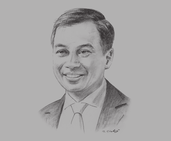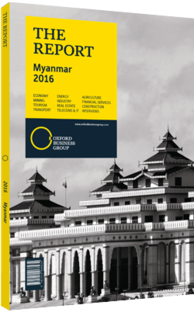U Thadoe Hein, Managing Director, Myanmar Awba Group: Interview

Interview: U Thadoe Hein
How does development of agriculture in Myanmar compare to other countries in the region?
U THADOE HEIN: Myanmar’s agriculture sector, like its other sectors, lags those of its peers in the region. Farming remains very traditional and primitive compared to neighbouring countries. The use of fertilisers and other inputs is only one-seventh that of Thailand and Vietnam. Thus yields are low and so is crop quality. Myanmar also lags behind in terms of processing of agricultural output. Rice mills, fruit and vegetable processing, packaging and storage, and market access could all be improved and developed to be on par with our neighbours.
How can farming and fertilisation techniques better enhance crop yields across the country?
HEIN: Myanmar’s farmers are using very little fertiliser, and though the country is fortunate to have fertile soil, as the population grows and as multiple cropping is practiced on the same farmland over many years, soil nutrients will be depleted, and we need to replenish these by applying appropriate amounts of fertiliser. In agriculturally developed countries, the authorities survey the nutrient profiles of different regions and recommend fertilisation programmes. One of the main objectives of balancing soil nutrition, aside from increasing crop yields, is to make sure that farmers do not use excessive quantities of a single nutrient. For example, if farmers use too much nitrogen fertiliser, it can pollute the environment and ruin water supplies. Yield and crop quality can also be increased substantially with modern farm mechanisation, efficient irrigation systems like drip irrigation, and greenhouses.
What can be done to increase the amount of investment in the agriculture sector?
HEIN: Internally, the government needs to encourage farmers to invest more in their farmland and ensure their operations are profitable. So much money is wasted in transportation and financing costs, leaving farmers barely profitable. The cost of logistics in Myanmar is the highest in the region, and this reduces margins by 10% to 15%. Additionally, farmers have limited access to competitive agricultural loans, so most of them have to rely on costly financing at high interest rates, sometimes of more than 5% per month. High interest rates are an inhibitor of profitability. As in any other businesses, people will not invest if the return is inadequate.
Land utilisation could be improved by developing irrigation infrastructure. Rice farmers in Vietnam’s Mekong Delta grow as many as three crops of rice per year without needing to be concerned about droughts and floods, while Myanmar’s farmers in Ayeyarwaddy Delta can barely grow two crops. The monsoon crop is a risky one due to the potential for flooding, so farmers are not making adequate investments and yields are poor.
Yields could be increased twofold with the right investment in infrastructure. Better infrastructure, such as irrigation developments and road access – along with financial inclusion – is essential to stimulating investment in farming and agriculture.
Furthermore, the government needs to support investors in post-harvest processing and export by offering tax incentives for milling, packaging and processing. Low-cost, long-term financing options must be given to the investors and entrepreneurs throughout the agriculture value chain. Additionally, a clear legal framework and set of regulations must be established so that foreign investors can work together with farmers without endangering ownership of the land. By working together with small holders, foreign investors may be able to create large-scale, modern farming operations using a cooperative approach, or through the creation of publicly listed companies with shareholding farmers.
You have reached the limit of premium articles you can view for free.
Choose from the options below to purchase print or digital editions of our Reports. You can also purchase a website subscription giving you unlimited access to all of our Reports online for 12 months.
If you have already purchased this Report or have a website subscription, please login to continue.

